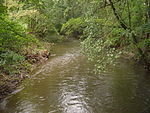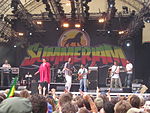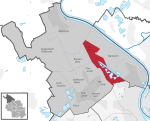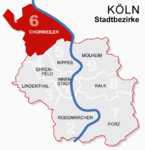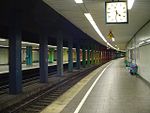Wupper
Rivers of GermanyRivers of North Rhine-WestphaliaTributaries of the RhineWupperWupper basin

The Wupper is a right tributary of the Rhine in the state of North Rhine-Westphalia, Germany. Rising near Marienheide in western Sauerland it runs through the mountainous region of the Bergisches Land in Berg County and enters the Rhine at Leverkusen, south of Düsseldorf. Its upper course is called the Wipper. On its course of about 116 km, the Wupper passes through the city of Wuppertal where the suspension railway runs for 10 kilometres above the river. It is crossed by the highest railway bridge in Germany near Müngsten, between Remscheid and Solingen. A few kilometers further down, Burg Castle is located on a hill overlooking the river.
Excerpt from the Wikipedia article Wupper (License: CC BY-SA 3.0, Authors, Images).Wupper
A 59, Leverkusen Rheindorf (Stadtbezirk I)
Geographical coordinates (GPS) Address Nearby Places Show on map
Geographical coordinates (GPS)
| Latitude | Longitude |
|---|---|
| N 51.045277777778 ° | E 6.9408333333333 ° |
Address
A 59
51371 Leverkusen, Rheindorf (Stadtbezirk I)
North Rhine-Westphalia, Germany
Open on Google Maps
